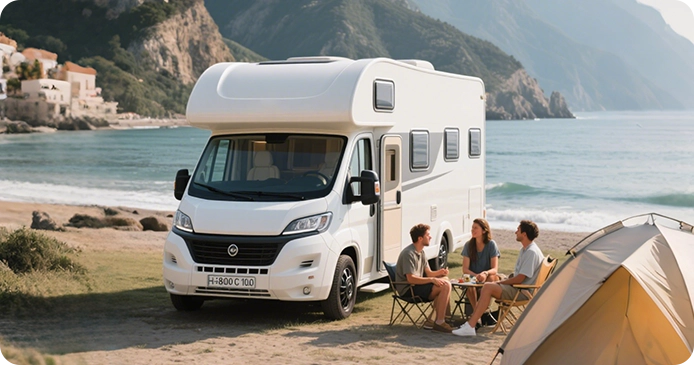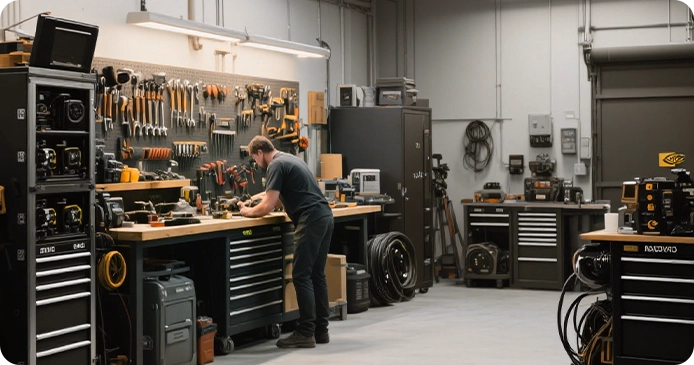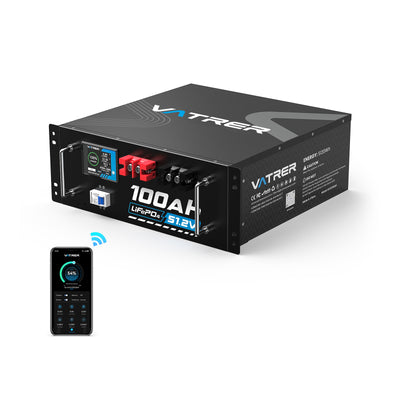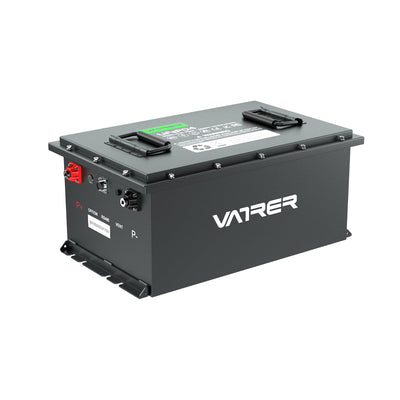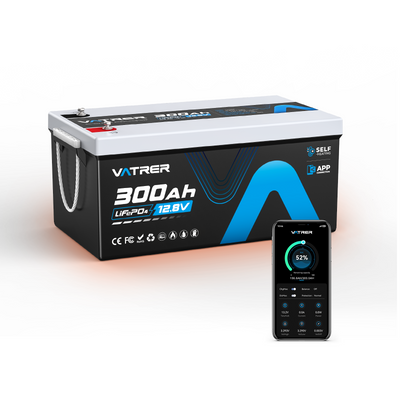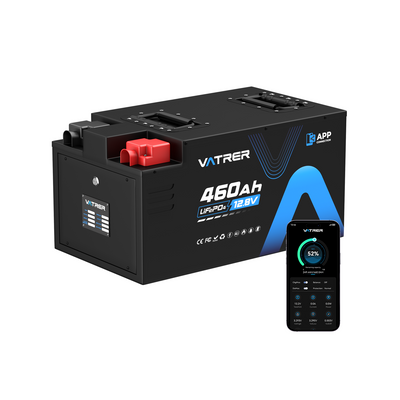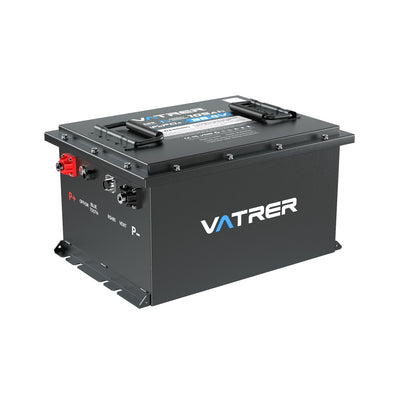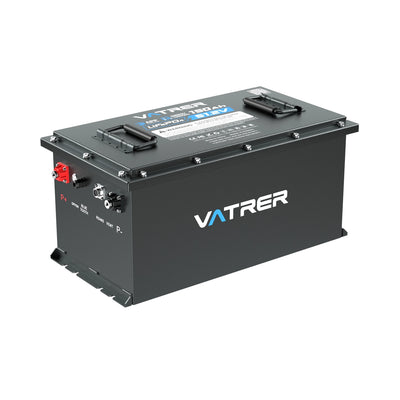
How To Convert a Golf Cart To Lithium Batteries
If you're a golf cart owner looking to improve your ride's performance, switching from traditional lead-acid batteries to lithium ones can make a noticeable difference. Many golf carts, whether they're from brands like Club Car, EZGO, Yamaha, or Icon, start with lead-acid setups that work fine but have limitations in range and upkeep.
Therefore, a golf cart lithium battery conversion kit offers a way to address those issues, providing longer run times and less hassle. According to a 2025 market analysis, the U.S. lithium golf cart battery market is projected to surpass $2.5 billion by 2033, reflecting growing adoption among owners seeking efficiency gains.
In this guide, we'll cover the reasons for making the switch, how to pick the right lithium battery, preparation steps, the actual conversion process, and more. Whether you're handling an electric golf cart lithium battery conversion yourself or planning to consult a pro, this article aims to give you the details you need to decide and proceed confidently.

Why Upgrade Your Golf Cart to Lithium Batteries?
Upgrading a golf cart to lithium batteries can enhance its performance, extend usability, and reduce long-term costs. Unlike lead-acid batteries, which are common in most golf carts but wear out faster and demand more maintenance, lithium batteries offer practical benefits that appeal to golfers and daily users seeking efficiency and reliability. Below are the key reasons to make the switch.
Reduced Weight for Better Performance
Lithium batteries weigh significantly less than lead-acid ones, typically 20 to 30 lbs per unit compared to 60 lbs or more. This reduction, often 50-70%, improves acceleration and handling, especially on hilly or uneven terrain. Lighter weight also reduces strain on the motor and tires, potentially lowering repair costs over time.
Faster Charging for Less Downtime
Lithium batteries charge in a few hours, compared to eight or more hours for lead-acid batteries. This quick charging minimizes waiting time, allowing golfers and frequent users to spend more time on the course or running errands without long recharging breaks.
Longer Cycle Life for Cost Savings
With over 4,000 charge-discharge cycles, lithium batteries can last 10 years or more with regular use, far outpacing lead-acid batteries, which typically manage 300 to 500 cycles and need replacement every three to five years. This extended lifespan reduces the frequency and cost of battery replacements.
Higher Energy Density for Extended Range
Lithium golf cart batteries store more power in a compact size due to their higher energy density. For example, a 48V 100Ah lithium battery delivers about 5kWh of energy, supporting 40-50 miles of range per charge, a 20-30% improvement over lead-acid setups. This efficiency supports longer trips and aligns with environmental goals by optimizing resource use.
Choosing the Right Lithium Battery for Your Golf Cart
Selecting the right lithium battery for your golf cart ensures compatibility and optimal performance. Whether you're upgrading a Club Car, EZGO, Yamaha, or Icon, matching key specifications is critical to avoid issues and maximize benefits.
Below are the essential factors to consider when choosing a lithium battery conversion kit for golf cart use, along with practical guidance to make an informed decision.
Match the Correct Voltage
Voltage is a critical starting point, as most golf carts operate on 36V or 48V systems. Using a mismatched battery, such as a 36V battery in a 48V cart, can cause sluggish performance or strain the system. Always check your cart's manual or existing battery labels to confirm the required voltage for seamless operation.
Select Appropriate Capacity
Capacity, measured in amp-hours (Ah) or kilowatt-hours (kWh), determines how long the battery powers your cart between charges. For average use, a 48V 100Ah battery may suffice, offering 40-50 miles of range. For heavier loads or longer trips, opt for 48V 150Ah or higher. Estimate your daily mileage to choose a capacity that meets your needs without overpaying for excess power.
Ensure Proper Dimensions
The battery must fit your cart's battery compartments to avoid costly modifications. Standard sizes like GC2 are common, but measure your compartment to confirm. Many lithium golf cart batteries 48V conversion kits are designed as drop-in replacements, simplifying installation for models like Club Car or EZGO.
Prioritize a Reliable Battery Management System (BMS)
A quality BMS is essential for safety, monitoring cell balance and temperature to prevent overcharging or overheating. This is especially important in hot climates, where a robust BMS ensures the battery performs reliably under stress.
Choose the Right Battery Type
Two common lithium battery types are available:
- LiFePO4 (Lithium Iron Phosphate): Known for stability and safety, LiFePO4 is ideal for consistent golf cart use, especially in warmer regions due to its high-temperature resilience.
- NMC (Nickel Manganese Cobalt): Offers a balance of power and longevity, suitable for varied driving conditions but slightly less stable in extreme heat.
Consider Weight and Structural Compatibility
Ensure the battery's weight aligns with your cart's design to avoid stressing the frame or suspension. Lithium batteries are lighter than lead-acid, but verify that the cart's controller and charger are compatible with the new battery, or budget for necessary upgrades.
Check Warranty and Local Regulations
Look for warranties of two to five years to cover potential defects, providing peace of mind. Additionally, check local regulations or golf course policies, as some areas have specific guidelines for battery types to ensure safety and compliance.
Model-Specific Considerations
To simplify your selection, the table below summarizes popular golf cart brands to help you easily choose the right battery:
| Golf Cart Model | Recommended Voltage | Typical Capacity Range | Compatible Battery Type | Notes on Conversion Kit |
|---|---|---|---|---|
| Club Car | 48V | 100-150Ah | LiFePO4 or NMC | Club Car golf cart lithium battery conversion kit often includes custom brackets for easy fit. |
| EZGO | 36V or 48V | 100-120Ah | LiFePO4 | EZGO golf cart lithium battery conversion kit focuses on plug-and-play wiring. |
| Yamaha | 48V | 100Ah | NMC | Yamaha golf cart lithium battery conversion kit may require minor tray adjustments. |
| Icon | 48V | 105Ah | LiFePO4 | Icon golf cart lithium battery conversion supports quick swaps with minimal tools. |
Preparing for the Golf Cart Lithium Battery Conversion
Before starting the conversion, gather the right tools and focus on safety to make the process straightforward.
You'll need the following:
- lithium battery pack
- a compatible charger
- mounting brackets or trays
- battery cables and connectors
- a fuse
- circuit breaker
- insulation
- heat shrink tubing
and Basic hand tools like:
- wrenches
- screwdrivers
- pliers
- wire cutters
- strippers
- multimeter for testing
- a battery terminal puller
- drill with bits and a crimping tool
For safety, always wear gloves and eye protection. Disconnect the old battery first to avoid shocks. Work in a well-ventilated area, and have a fire extinguisher nearby, though lithium batteries are generally safer than lead-acid.
Plan for disposing of old lead-acid batteries responsibly—many auto parts stores or recycling centers accept them, following local regulations to minimize environmental impact. Proper recycling of old batteries can reduce lead pollution and promote sustainable practices.
Step-by-Step Guide to Converting Your Golf Cart to Lithium Batteries
Converting a golf cart to lithium involves careful removal and installation to ensure everything connects properly. Follow these steps for a reliable outcome.
Step 1: Remove Old Lead-Acid Batteries
Turn off the cart and disconnect the main power. Use a wrench to loosen brackets and cables, starting with the negative terminal. Lift out the heavy lead-acid batteries—a puller tool helps here. Clean the tray of any residue or corrosion on cables to prevent future electrical issues.
Step 2: Install the Lithium Battery Pack
Position the new lithium battery in the compartments, distributing weight evenly for balance. These are lighter, so handling is easier. Secure them with brackets and screws, ensuring cables reach without strain.
Step 3: Connect Battery Cables and Wiring
Attach cables to the positive and negative terminals, double-checking polarity to avoid shorts. Use the multimeter to confirm connections. Follow the manufacturer's wiring diagram for your lithium battery conversion kit for golf cart to integrate with the existing system.
Step 4: Install and Verify Charger Compatibility
Match the charger's voltage to the battery—using the wrong one can cause damage. Install it per instructions, then test a charge cycle while monitoring the initial charging temperature to verify BMS functionality. For guidance, many resources offer simple charging tutorials to get you started right.
After installation, test the cart in a safe area to confirm operation.
Cost Considerations for Lithium Golf Cart Battery Conversion
The upfront cost for a lithium conversion varies, but expect $500 to $1,500 for a basic kit, depending on voltage and capacity. Higher-capacity options, like a 48V 100Ah setup, might reach $2,000 including accessories.
While more expensive initially than lead-acid replacements ($300-$600), lithium pays off through fewer swaps and better efficiency. Users often save on electricity and maintenance, with total ownership costs dropping 30-50% over five years.
To illustrate the long-term value, consider this comparison:
| Aspect | Lead-Acid | Lithium |
|---|---|---|
| Initial Cost | $300-600 | $500-1,500 |
| 5-Year Total | $1,500+ (multiple replacements) | $1,000-1,200 (fewer replacements, lower energy use) |
Maintaining Your Lithium Golf Cart Battery
Lithium batteries require less upkeep than lead-acid, but regular checks keep them performing well.
- Monitor the BMS through any app or display it offers, watching for temperature or balance alerts.
- For LiFePO4 types, check the state of charge (SOC) level monthly to ensure optimal health.
- Clean connections quarterly to prevent buildup.
- Store the cart in a cool, dry spot during off-seasons, keeping the battery at 50% charge.
- Avoid full discharges—aim to recharge at 20% remaining.
- Follow manufacturer guidelines for charging, and schedule a professional review annually to catch issues early. This approach extends the battery's life without much effort.
Troubleshooting Common Golf Cart Lithium Battery Conversion Issues
If problems arise during or after conversion, systematic checks can resolve them.
- For wiring errors, reverify terminals with a multimeter—reversed polarity often causes no-start conditions.
- BMS calibration might need adjustment if the battery doesn't charge fully; consult the manual.
- If a BMS alert appears, check cell balance to restore even performance.
- Charger mismatches show as slow charging or overheating—swap to a compatible unit.
- Post-conversion, if range is short, test voltage under load.
Use this checklist for testing:
- Confirm all connections are tight.
- Run a full charge-discharge cycle.
- Monitor speed and distance on a flat path.
- If issues persist, a technician can diagnose deeper problems.
Conclusion: Power Up Your Golf Cart with a Lithium Battery Upgrade
Switching your golf cart to lithium batteries boosts range, speed, and reliability while cutting maintenance needs. From selecting the right lithium battery conversion kit for golf cart to completing the install, this process can transform your experience on the course.
For those ready to proceed, consider options like Vatrer batteries, which use LiFePO4 cells for up to 4,000 cycles and quick charging that reduces wait times by half.
Vatrer 48V 105Ah model, for example, delivers 5,376Wh of energy for extended range and comes with a built-in 200A BMS for safety, backed by a warranty service and earning positive feedback from users on carts like Club Car for better acceleration and longevity. Explore Vatrer golf cart batteries to find a fit for your setup and start enjoying the benefits.
FAQs
Can Any Golf Cart Be Converted to Lithium Batteries?
Most golf carts can be converted to lithium batteries, including popular models like Club Car, EZGO, Yamaha, and Icon, but compatibility depends on the cart's electrical system and physical design. Older models or gas-powered carts may require significant modifications, such as upgrading the controller or wiring harness, which can increase costs. To confirm compatibility:
- Check Voltage Requirements: Ensure the cart's system (like 36V or 48V) matches the lithium battery conversion kit for golf cart use.
- Inspect Battery Compartment: Verify that the lithium battery fits within the existing space or if custom trays are needed.
- Evaluate Controller Compatibility: Some older controllers may not support lithium's voltage regulation; consult a technician if unsure. If your cart is incompatible, a professional can assess retrofit options, but costs may outweigh benefits for very old models. For standard electric carts, a lithium golf cart battery 48V conversion kit is often a straightforward upgrade.
Is It Worth Converting a Golf Cart to Lithium Batteries?
Converting a golf cart to lithium batteries is often worth the investment for frequent users or those prioritizing performance and convenience. Lithium batteries offer significant advantages over lead-acid, including 50-70% less weight, faster charging (2-4 hours vs. 8+ hours), and a lifespan of 10+ years compared to 3-5 years. These benefits translate to:
- Cost Savings: Reduced replacement frequency and lower energy costs can save 30-50% over five years.
- Improved Performance: Extended range (40-50 miles) and better handling suit golfers and community users.
- Environmental Impact: Lithium's efficiency reduces resource use, and proper lead-acid recycling minimizes pollution. However, for infrequent users or carts nearing the end of their lifespan, the upfront cost ($500-$2,000) may not justify the switch. Assess your usage frequency and cart condition to decide if the long-term benefits align with your needs.
Do You Need a Special Charger for Lithium Batteries in a Golf Cart?
Yes, lithium batteries require a charger specifically designed for their chemistry and voltage to ensure safe and efficient charging. Using a lead-acid charger can cause overcharging, overheating, or reduced battery life. To choose the right charger:
- Match Voltage: Ensure the charger supports your battery's voltage (like 36V or 48V).
- Select Lithium-Compatible Models: Look for chargers labeled for LiFePO4 or NMC batteries, often with smart charging profiles.
- Check BMS Compatibility: The charger should work with the battery's Battery Management System to prevent damage. A lithium-compatible charger typically costs $100-$300.
Brands like Vatrer offer chargers tailored for their lithium golf cart batteries, ensuring optimal performance. You can also upgrade with a Vatrer golf cart battery kit, which includes a compatible lithium charger. Always follow the manufacturer's charging guidelines to maintain warranty coverage and battery health.
How Long Does It Take to Convert a Golf Cart to Lithium Batteries?
The conversion process typically takes 2-6 hours for a DIY project, depending on experience and cart complexity, or 1-3 hours for a professional. Key factors affecting time include:
- Preparation: Gathering tools and verifying components takes 30-60 minutes.
- Removal and Installation: Removing lead-acid batteries and installing the lithium battery pack takes 1-2 hours, with lighter lithium batteries simplifying handling.
- Wiring and Testing: Connecting cables and testing the system adds 1-2 hours. To save time, use a model-specific kit (like Club Car golf cart lithium battery conversion kit) for plug-and-play installation. If you're inexperienced, hire a technician to avoid errors and ensure safety, which also speeds up the process.
What Are the Risks of Converting a Golf Cart to Lithium Batteries Without Professional Help?
DIY conversions are feasible but carry risks if not done correctly, especially for users new to electrical systems. Common risks include:
- Wiring Errors: Incorrect polarity or loose connections can cause short circuits or cart failure.
- BMS Misconfiguration: Improper setup may lead to overheating or reduced battery life.
- Incompatible Components: Mismatched chargers or controllers can damage the battery or cart. To mitigate risks:
- Follow Manufacturer Guidelines: Use the provided wiring diagram and double-check connections with a multimeter.
- Consult Online Resources: Watch tutorials for your specific cart model (like EZGO golf cart lithium battery conversion kit).
- Start Small: Test connections before full assembly. If unsure, hire a certified technician to ensure safety and performance, especially for complex setups like Yamaha or Icon golf cart lithium battery conversions.
Share
1 comment
please send a pdf. for changing the EZGO battery Model 38.4V105AH.
We need the technical instructions of which wires goes where.







































































